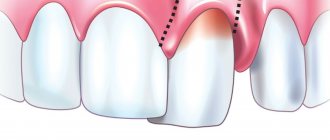Please note that the introduction of the contraceptive Implanon can only be done in the clinic at Krasnopresnenskaya metro station at the address: Moscow, Volkov lane, 21, phone +7 (495) 151-29-71 (ext. 2)
Injection contraception is one of the safest methods of preventing unplanned pregnancy, which consists of administering a drug. In this case, there is no disruption of the cycle or disruption of the hormonal levels of the female body. One of the most modern injectable contraceptives is the subcutaneous contraceptive Implanon.
Action of Implanon
To find out whether using Implanon for pregnancy protection is right for you, you can consult an obstetrician-gynecologist at the Zdorovye medical center network. Implanon is injected under the skin in the upper third of the shoulder exclusively by a medical specialist who knows this technique. The implant is a thin elastic silicone rod, the size of which is 4 cm in length and 2 mm in diameter, so after installation it is almost invisible. In this way, a woman can maintain the confidentiality of her contraceptive use.
Implanon's action is aimed at preventing the growth and release of eggs from the ovaries, thickening the cervical mucus and impeding the passage of sperm. Hormones constantly and continuously enter a woman’s body, so the effectiveness of the drug in preventing pregnancy is 99%.
The Implanon implant has virtually no effect on lactation, which is why many women decide to use it after childbirth. The drug can be administered 4–5 weeks after the birth of the baby.
How justified is breast reconstruction after mastectomy?
Oncological disease and concomitant therapy is in itself a serious test for the body. And the joy of recovery is often overshadowed by disfigured breasts, loss of femininity and physical attractiveness, because one of the main ways to stop the spread of a malignant tumor was and remains a mastectomy.
It is no coincidence that many women begin their return to normal life and its joys with breast reconstruction. Reconstructive plastic surgery can be one-stage – it is performed simultaneously with the removal of the mammary gland in one operation. Or delayed - some time after the amputation.
Reconstructive surgery, if performed by an experienced reconstructive surgeon, is absolutely safe and, what is especially important and proven by many years of research, does not increase the risk of tumor recurrence.
Mastectomy is performed not only for oncology, but also in a number of other cases:
- breast sarcoma;
- purulent inflammation, mastitis, abscess formation;
- severe trauma to the mammary gland;
- gynecomastia;
- prevention of diseases with a genetic predisposition to them.
In all these cases, it is possible to restore the removed mammary glands.
Implanon: implant installation
To install Implanon, you must consult a doctor, since this process is a minor surgical operation. Implanon is installed on the inner surface of the shoulder of the arm that is less involved in a woman’s daily life (for a right-handed person, the implant is installed in the left arm, for a left-handed person, vice versa).
Before installing Implanon, the surgical field is treated with antiseptics, the doctor makes a mark at the place where Implanon will be administered. After this, local anesthesia is performed, the doctor makes a miniature incision and inserts the implant. The incision is fixed with one suture, which is removed after 7–10 days.
Breast reconstruction: the story of one victory
What does a woman experience who has survived breast cancer, amputation, long and difficult treatment, and emerged victorious from this situation? Only she knows this, but the fact that a mastectomy is not a reason to put an end to future life is beyond doubt. And a real case from practice will help you verify this.
The patient was diagnosed with stage 3 breast cancer at the age of 38. One day, in the shower, she simply felt a lump in her chest, turned to a therapist, and he advised her to go to an oncology clinic and undergo an examination.
Several tumor foci were identified. Then there was a long and tedious treatment, 6 months of chemotherapy and a radical mastectomy. Since the disease was diagnosed at a late stage, a large amount of tissue had to be removed and the mammary gland had to be completely removed. But we managed to save all the skin and nipple.
Thanks to this, during reconstructive surgery there was no need to stretch the skin and install temporary expanders. We were able to immediately proceed to installing the implant, avoiding additional surgical intervention.
An anatomical implant was chosen for the operation because it closely matches the shape of the natural breast.
An incision was made in the area of the submammary fold and an implant was installed. The reconstructed breast turned out to be larger in volume than the healthy one, so it was decided to perform a symmetrizing operation. An endoprosthesis was installed in the second breast and the skin was tightened.
Advantages of the method
Injection contraception allows you to minimize the risk of unwanted pregnancy; this method does not have the side effects that oral contraceptives have (liver damage). In addition, the implant does not require complex care and all you need to do is visit a gynecologist every 6 months.
The method provides a reliable contraceptive effect for 3 years and can be stopped at any time at the woman’s request - the implant is removed in 10 minutes by a doctor and pregnancy can occur within a month.
Indications and preparation for implantation
The main indication for inserting an implant is the woman’s reluctance to become pregnant at the moment. Also, its use may be indicated in the late reproductive period, if there are contraindications for taking COCs containing estrogen, in combination with the treatment of certain hormone-dependent diseases.
Before inserting the implant, the doctor prescribes an examination, which includes:
- tests to exclude pregnancy;
- tests to exclude individual intolerance to the components of the drug;
- ultrasound examination of the pelvis;
- examination of a smear of vaginal discharge;
- exclusion of other possible contraindications.
Only a doctor in a clinic should insert an implant in compliance with antiseptic rules. The procedure is prescribed on a specific day of the menstrual cycle. After childbirth or medical abortion, contraception can be installed after six to eight weeks. The implant is inserted into the subcutaneous fat through a small incision or puncture. The injection site is the inner side of the shoulder. The contraceptive effect of the drug begins almost immediately after administration.
What is important to know when using Implanon:
- The main side effect is a change in the nature of bleeding. In most cases, menstrual flow may be light or temporarily absent. In very rare cases, heavy bleeding occurs
- Taking certain medications or herbal preparations may reduce the effectiveness of Implanon, in which case additional contraception may be required.
- If a woman changes her mind and wants to have a child, the effect of Implanon is reversible within a month after removal
To remove the implant, it is enough to make an incision on the skin of no more than 2 mm, however, the removal procedure can only be entrusted to a gynecologist in a specialized medical clinic.
Important information about contraceptive implants:
- the effectiveness of contraceptive implants reaches 99%;
- implants have a long validity period - from three to five years;
- after removing the contraceptive implant, the reproductive functions of the woman’s body are restored almost immediately;
- After installation of the implant, changes in the menstrual cycle may occur. Menstruation may become irregular, less or more heavy. Some women experience amenorrhea for several months;
- some medications can reduce the effectiveness of the implant, so if you are taking any medications, be sure to tell your doctor about it;
- A contraceptive implant cannot protect against sexually transmitted diseases.
Preparatory stage
Goal: identifying contraindications to implantation, detecting hidden dental diseases, obtaining a detailed clinical picture, planning an operation with a predictable result.
As a rule, preparation for dental implantation lasts no more than 1 day. But if the patient has chronic diseases and possible contraindications to the installation of dental implants, the preparatory stage may drag on for a week.
Visual examination of the oral cavity
The doctor receives basic information about the health of teeth and gums, the presence of stone, etc.
Duration: 30 minutes.
Taking tests
Only if the patient is suspected of having some contraindications for dental implantation, he is prescribed a series of tests:
- clinical blood test with leukocyte formula + ESR;
- coagulogram (fibrinogen level, prothrombin and thrombin time);
- biochemistry (total protein, protein fractions, urea, creatinine, bilirubin, etc.);
- blood glucose levels;
- detection of antibodies to HIV and hepatitis.
It is important to know that pre-implant laboratory test results are only valid for 14 days.
Duration: up to 7 days.
Hardware diagnostics
To determine the anatomical features of the bone, assess its quality and determine the location for installation of implants, a panoramic image of the jaw (OPTG) and cone beam computed tomography (CBCT) are performed.
At this stage the doctor:
- assesses the condition of the jaw bones and bone density in areas of missing teeth;
- identifies pathologies in the periodontium;
- records existing tooth movement;
- calculates the distance of the future implant from the mandibular nerve;
- determines the exact number of root canals and analyzes the features of their structure;
- checks for cracks in the roots of teeth, unerupted eights, malocclusions, and neoplasms in the maxillofacial area.
Duration: up to 1 hour.
Sanitation of the oral cavity
Identified dental diseases are treated: caries, gingivitis, pulpitis, etc. If necessary, previously installed dentures, crowns, and veneers are replaced. Teeth that cannot be treated are removed.
Duration: up to 3 days (depending on the amount of work).
Bone grafting
The All-on-4 (all on four) and All-on-6 (all on six) dental implant concepts make it possible to restore the dentition without bone grafting in most clinical situations.
However, if increasing the volume of spongy tissue is indicated, one of the following methods is used:
- sinus lift (only for dental implantation in the upper jaw) - through an incision in the gum and bone, the bottom of the maxillary sinus is raised and filled with artificial bone material;
- osteoplasty - replanting natural or artificial material from a donor (human or animal) under the gum or into the alveolar ridge;
- autogenous transplantation - replanting a block of your own bone to increase the volume in height and width.
Duration: from 3 months to 1 year.
Where to go for installation
Many dental clinics offer wing-shaped implants. But it is important to choose one that uses original pterygoids and employs qualified doctors.
| dental clinic | Website | Address |
| Center for Implant Technologies ROOTT | https://dentalroott.ru | Moscow, st. Rustaveli, 14 building 9 Volgogradsky Prospekt, 4A, 1 subdivision, 2nd floor. 80 |
| Novadent | https://www.novadent.ru | Moscow, st. Dubininskaya, 27, building 1 8 |
| Dentaland | https://dentaland.ru | Moscow, Pechatnikov lane, 20, building 1 8 |
| Dr. Fedorov Implantation Center | https://implantolog-fedorov.ru | Moscow, st. Lyusinovskaya, 53, bldg. 2 |
Fillers - pros and cons
You can correct the shape of your face by using special filler substances called fillers. The main advantage of this method of correcting aesthetic defects is its minimal invasiveness. They are injected into the skin and effectively smooth out wrinkles and folds, correct the shape of the face and restore volumes that have been lost with age.
In most cases, fillers are composed of hyaluronic acid. This substance is not rejected by the body, as it is originally contained in human skin. Injections of hyaluronic acid can solve a number of aesthetic problems, namely:
- irregular chin shape;
- thin lips and their unclear outline;
- insufficient fullness of the cheekbones;
- pronounced nasolabial folds;
- creases between the eyebrows;
- sunken cheeks;
- horizontal wrinkles on the forehead;
- lip asymmetry;
- expression lines around the eyes and mouth;
- acne marks.
Hyaluronic acid gives your skin a fresher, more youthful appearance. Due to the binding of water molecules and neutralization of free radicals, the skin becomes hydrated and looks much better. The administration of the drug increases the access of oxygen to cells and stimulates the production of elastin and collagen. Thanks to this, the face is lifted, even deep wrinkles and folds are smoothed out, and the skin texture is evened out.
Other useful material
Alternative to basal implantation
Implant installation
The best Swiss implants
Zirconium dioxide crowns: pros and cons
How is breast reconstruction performed?
Delayed reconstruction is performed using different methods: using the patient's fat tissue graft, tissue flaps taken from the back, abdomen or buttocks. But the optimal result is demonstrated by breast reconstruction using implants.
In this case, the traumatism of the operation is minimized and the reconstruction itself is greatly simplified. Plus, there are no stitches or scars on other parts of the body, since donor material is not required - it is replaced by a breast implant; after a mastectomy, this is the simplest, most effective and safest way to restore attractiveness and a healthy appearance to the breasts.
The surgical technique is selected individually, taking into account the characteristics of the patient, medical history, type of mastectomy and other factors.
If there is not enough skin volume to install the endoprosthesis, or it has been completely removed along with the glands, a two-stage reconstruction is performed:
- At the first stage, consultation and selection of an implant is carried out;
- Based on the results of the examination and analysis, the surgical technique and type of anesthesia are prescribed;
- markings are made on the skin;
- an incision is made in the selected area;
- to restore skin area, an expander (temporary implant) is installed under the pectoralis major muscle and filled with saline;
- over the next few weeks, an additional volume of saline is pumped into the implant so that it gradually increases in size;
- as a result, the expander puts pressure on the pectoral muscle and stimulates skin stretching, thereby forming a pocket for the endoprosthesis;
- after a few months, if there are no complications, they move on to the second stage - the expander is encapsulated and a permanent silicone implant is installed in its place;
- This is followed by a period of rehabilitation, removal of stitches and recovery.
The situation with cancer patients is complicated by the fact that tissues heal poorly after radiation therapy and are susceptible to infections and inflammation. The body itself is weakened by disease and therapy.
During a mastectomy, not only soft tissue and lymph nodes are removed, but also blood vessels that provide vitality to tissue and skin. This significantly complicates the implantation process, and the installed prosthesis finds itself in difficult conditions.
In the future, this can provoke complications, pathologies, including rejection of the endoprosthesis, and also prolong the rehabilitation period.
Delayed reconstructive surgery has no time limits and can be performed after several months or after several years.
One-stage breast reconstruction
Single-stage breast reconstruction is performed simultaneously with a mastectomy and can reduce the level of injury, pain, discomfort and scarring, since instead of two operations only one is performed.
Simultaneous reconstruction is possible in cases where the mammary glands are subject to amputation, but the skin membrane remains intact. In this case, the damaged tissue is removed and an implant is placed under the pectoral muscle.
How does the procedure work?
On average, the duration of the procedure is 40-60 minutes. Since the procedure has a list of contraindications, the skin is carefully examined by a cosmetologist first. The filler and the method of its administration are selected based on the individual characteristics of the body. The substance is injected using a thin needle. The injection area is usually treated with a special cream that acts as a local anesthetic.
In rare cases, hematomas form at the injection site. They usually go away on their own, but you can also use a special ointment to improve the condition. In addition, after the procedure, redness and swelling may appear, and the patient may experience a feeling of fullness. Usually these symptoms are short-lived and go away on their own after some time. The effect of introducing fillers is noticeable immediately. The obtained result lasts for 6-12 months, in rare cases – up to 18 months.
Contraindications to the injection of fillers and installation of implants are identical. Surgery is not used during pregnancy and breastfeeding. Also, plastic surgery will need to be refused in case of epilepsy, oncology, a tendency to form keloid scars, blood clotting disorders and in the presence of inflammatory processes in the intervention area.
Surgical stage
Purpose: preparation of the site for implant installation, implantation of an artificial root, formation of the correct gum contour.
Under local anesthesia, the implantologist sequentially performs the following 4 surgical procedures:
Dissection of gum tissue
To gain access to the bone of the lower or upper jaw, the doctor makes a small incision in the gum and removes the flaps.
Formation of a landing channel for an implant
Using a surgical template, the doctor drills a channel of the required depth and width into the spongy tissue.
The doctor measures the resulting depth of the canal in the bone tissue and compares it with the required value.
Performs smooth boring of the channel to the planned width. Drills of different diameters are used sequentially.
Fixation of titanium rod
An implant is placed in the hole.
First, the artificial root is implanted using an electrical device. It is then screwed in by hand until it matches the edge of the bone.
The implant is closed with a temporary plug.
Gum suturing
The edges of the incisions are sutured to close the plug.
After the implant has healed (3-4 months on the lower jaw and 4-6 months on the upper jaw), to give the gum an aesthetic contour, the plug is removed and a gum former is placed.
A maximum of 14 days after installation of the gum former, it is replaced with an abutment - the connecting link between the implant and the orthopedic structure.
A temporary coping is placed on the abutment for taking impressions.
What are polyurethane implants?
The main distinguishing feature of polyurethane implants is the presence of an outer layer of special medical polyurethane foam. Thus, the elements are more dense and at the same time stable. There is no risk of complications - both immediately after surgery and during wear. This “predictability of behavior” determines the popularity of polystyrene endoprostheses, which are rightly called one of the most progressive.
Visually, medical polyurethane looks like a foam film covering the implant. The shell thoroughly absorbs the tissue fluid of the bed; accordingly, the wound heals according to the “dry” concept. Over time, the polyurethane layer is absorbed, and the implant remains securely fixed. At the same time, it has been officially proven that implants made from p/u are absolutely safe for human health!
Experienced plastic surgeons consider polyurethane endoprostheses to be the safest for primary and especially secondary breast correction. It is very important to achieve maximum results with minimal risk - from the point of view of both aesthetics and biocompatibility. The polyurethane implant copes with these tasks almost flawlessly!
For the first six months, breasts may be denser than they should be. This occurs due to the gradual formation of a fibrous capsule, but after a few months the bust will be much softer than with the implantation of analogue elements.
When are temporary implants placed?
- There is an urgent need to restore aesthetics and chewing function;
- with ectodermal hypohidrotic dysplasia, which provokes underdevelopment of teeth;
- orthodontic treatment of dental pathologies;
- to protect soft tissues at the site of installation of a permanent implant during classical implantation.
Temporary dental implants solve the following problems :
- relieve the patient from psychological discomfort;
- after grinding the tooth under the prosthesis, its unattractive appearance is hidden;
- exclude infection and the development of inflammation inside the ground tooth;
- eliminate hyperesthesia after turning;
- take on the chewing load, promoting the consumption of familiar foods;
- accelerate gum healing;
- protect against deformation and bone atrophy;
- promote uniform load distribution;
- allow to reduce the time of prosthetics.
The need to install temporary implants is dictated by the implantation method and the area of the jaw in which the lost tooth is restored. For example, when replacing a chewing tooth with prosthetics, a mini-screw may not be needed.
Sometimes, after successful engraftment of permanent implants (after 3-6 months), temporary mini-screws also grow in. In this case, they are left and filed down - they can be used as an additional support for the denture.
Polyurethane implants
Polyurethane implants are available in a wide range of volumes and shapes, and most importantly, after their implementation, the aesthetic parameters of the female bust are preserved as much as possible.
We asked for expert opinion about the advantages and features of polyurethane endoprostheses. The Butko Plastic clinic performs mammoplasty using modern polyurethane implants. Sign up for a consultation to dispel your doubts, get answers to all your questions, and personally see the effectiveness of breast correction. Butko Plastic – experience and innovation for your beauty!










